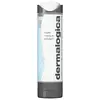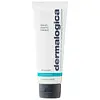What's inside
What's inside
 Key Ingredients
Key Ingredients

 Benefits
Benefits

 Concerns
Concerns

 Ingredients Side-by-side
Ingredients Side-by-side

Water
Skin ConditioningGlycerin
HumectantBehenyl Alcohol
EmollientSorbitol
HumectantCaprylic/Capric Triglyceride
MaskingHydroxyethyl Urea
HumectantPropanediol
SolventCetyl Ethylhexanoate
EmollientCetyl Alcohol
EmollientGlyceryl Stearate
EmollientCarthamus Tinctorius Oleosomes
EmollientHydrolyzed Jojoba Esters
Skin ConditioningBetaine
HumectantBambusa Arundinacea Stem Extract
Skin ConditioningMelia Azadirachta Leaf Extract
Skin ConditioningMelia Azadirachta Flower Extract
Skin ConditioningCorallina Officinalis Extract
Skin ConditioningCucumis Sativus Fruit Extract
EmollientCoccinia Indica Fruit Extract
Skin ConditioningAcacia Decurrens Extract
AstringentRicinus Communis Seed Oil
MaskingAloe Barbadensis Flower Extract
EmollientSolanum Melongena Fruit Extract
Skin ConditioningAverrhoa Carambola Fruit Extract
Skin ConditioningNephelium Lappaceum Branch/Fruit/Leaf Extract
Skin ConditioningSaccharomyces/Xylinum/Black Tea Ferment
Skin ConditioningSpirulina Maxima Extract
SmoothingTremella Fuciformis Extract
HumectantViola Odorata Leaf Extract
MaskingCurcuma Longa Root Extract
MaskingOcimum Basilicum Flower/Leaf Extract
TonicOcimum Sanctum Leaf Extract
Skin ConditioningBacillus Ferment
Skin ConditioningSodium Hyaluronate
HumectantTriethyl Citrate
MaskingPEG-75 Stearate
Pentylene Glycol
Skin ConditioningXanthan Gum
EmulsifyingPhytosteryl Oleate
Skin Conditioning1,2-Hexanediol
Skin ConditioningCeteth-20
CleansingSteareth-20
CleansingC12-13 Pareth-3
EmulsifyingCaprylyl Glycol
EmollientTitanium Dioxide
Cosmetic ColorantLactic Acid
BufferingButylene Glycol
HumectantPhenylpropanol
MaskingEthylhexylglycerin
Skin ConditioningCalcium Alginate
MaskingJojoba Esters
EmollientAminomethyl Propanol
BufferingPolyquaternium-10
Citric Acid
BufferingDipotassium Glycyrrhizate
HumectantGluconic Acid
Biosaccharide Gum-4
Skin ConditioningPhytosterols
Skin ConditioningSodium Benzoate
MaskingXylitol
Humectant3-Hexenol
MaskingSodium Acetate
BufferingSodium Chloride
MaskingIsopropyl Alcohol
SolventCaprylhydroxamic Acid
Water, Glycerin, Behenyl Alcohol, Sorbitol, Caprylic/Capric Triglyceride, Hydroxyethyl Urea, Propanediol, Cetyl Ethylhexanoate, Cetyl Alcohol, Glyceryl Stearate, Carthamus Tinctorius Oleosomes, Hydrolyzed Jojoba Esters, Betaine, Bambusa Arundinacea Stem Extract, Melia Azadirachta Leaf Extract, Melia Azadirachta Flower Extract, Corallina Officinalis Extract, Cucumis Sativus Fruit Extract, Coccinia Indica Fruit Extract, Acacia Decurrens Extract, Ricinus Communis Seed Oil, Aloe Barbadensis Flower Extract, Solanum Melongena Fruit Extract, Averrhoa Carambola Fruit Extract, Nephelium Lappaceum Branch/Fruit/Leaf Extract, Saccharomyces/Xylinum/Black Tea Ferment, Spirulina Maxima Extract, Tremella Fuciformis Extract, Viola Odorata Leaf Extract, Curcuma Longa Root Extract, Ocimum Basilicum Flower/Leaf Extract, Ocimum Sanctum Leaf Extract, Bacillus Ferment, Sodium Hyaluronate, Triethyl Citrate, PEG-75 Stearate, Pentylene Glycol, Xanthan Gum, Phytosteryl Oleate, 1,2-Hexanediol, Ceteth-20, Steareth-20, C12-13 Pareth-3, Caprylyl Glycol, Titanium Dioxide, Lactic Acid, Butylene Glycol, Phenylpropanol, Ethylhexylglycerin, Calcium Alginate, Jojoba Esters, Aminomethyl Propanol, Polyquaternium-10, Citric Acid, Dipotassium Glycyrrhizate, Gluconic Acid, Biosaccharide Gum-4, Phytosterols, Sodium Benzoate, Xylitol, 3-Hexenol, Sodium Acetate, Sodium Chloride, Isopropyl Alcohol, Caprylhydroxamic Acid
Salicylic Acid 0.5%
MaskingWater
Skin ConditioningKaolin
AbrasiveBentonite
AbsorbentGlycerin
HumectantPolysorbate 20
EmulsifyingPentylene Glycol
Skin ConditioningCarthamus Tinctorius Seed Oil
MaskingCetearyl Alcohol
EmollientButylene Glycol
HumectantGlyceryl Stearate Se
EmulsifyingPolysorbate 60
EmulsifyingAvena Sativa Kernel Extract
AbrasiveBisabolol
MaskingSpiraea Ulmaria Extract
AstringentMenthol
Masking10-Hydroxydecanoic Acid
Skin ConditioningSebacic Acid
Buffering1,10-Decanediol
SolventCamphor
MaskingFarnesyl Acetate
PerfumingPanthenyl Triacetate
Tocopheryl Acetate
AntioxidantDipotassium Glycyrrhizate
HumectantCinnamomum Zeylanicum Bark Extract
AntimicrobialSarcosine
Skin ConditioningNiacinamide
SmoothingYeast Extract
Skin ConditioningAesculus Hippocastanum Seed Extract
Skin ConditioningAmmonium Glycyrrhizate
MaskingPanthenol
Skin ConditioningZinc Gluconate
Skin ConditioningCaffeine
Skin ConditioningBiotin
AntiseborrhoeicHydroxyethylcellulose
Emulsion StabilisingDisodium EDTA
Capryloyl Glycine
Cleansing1,2-Hexanediol
Skin ConditioningTropolone
Skin ConditioningCaprylyl Glycol
EmollientCaprylhydroxamic Acid
Ethylhexylglycerin
Skin ConditioningMethylpropanediol
SolventCI 77891
Cosmetic ColorantZinc Oxide
Cosmetic ColorantSalicylic Acid 0.5%, Water, Kaolin, Bentonite, Glycerin, Polysorbate 20, Pentylene Glycol, Carthamus Tinctorius Seed Oil, Cetearyl Alcohol, Butylene Glycol, Glyceryl Stearate Se, Polysorbate 60, Avena Sativa Kernel Extract, Bisabolol, Spiraea Ulmaria Extract, Menthol, 10-Hydroxydecanoic Acid, Sebacic Acid, 1,10-Decanediol, Camphor, Farnesyl Acetate, Panthenyl Triacetate, Tocopheryl Acetate, Dipotassium Glycyrrhizate, Cinnamomum Zeylanicum Bark Extract, Sarcosine, Niacinamide, Yeast Extract, Aesculus Hippocastanum Seed Extract, Ammonium Glycyrrhizate, Panthenol, Zinc Gluconate, Caffeine, Biotin, Hydroxyethylcellulose, Disodium EDTA, Capryloyl Glycine, 1,2-Hexanediol, Tropolone, Caprylyl Glycol, Caprylhydroxamic Acid, Ethylhexylglycerin, Methylpropanediol, CI 77891, Zinc Oxide
 Reviews
Reviews

Ingredients Explained
These ingredients are found in both products.
Ingredients higher up in an ingredient list are typically present in a larger amount.
1,2-Hexanediol is a synthetic liquid and another multi-functional powerhouse.
It is a:
- Humectant, drawing moisture into the skin
- Emollient, helping to soften skin
- Solvent, dispersing and stabilizing formulas
- Preservative booster, enhancing the antimicrobial activity of other preservatives
Butylene Glycol (or BG) is used within cosmetic products for a few different reasons:
Overall, Butylene Glycol is a safe and well-rounded ingredient that works well with other ingredients.
Though this ingredient works well with most skin types, some people with sensitive skin may experience a reaction such as allergic rashes, closed comedones, or itchiness.
Learn more about Butylene GlycolCaprylhydroxamic Acid is a chelating agent.
Chelating agents help prevent metal ions from binding to other ingredients. This helps prevent unwanted reactions and effects from using the product.
Caprylhydroxamic Acid is often used with natural antimicrobial products as an alternative to preservatives.
Learn more about Caprylhydroxamic AcidCaprylyl Glycol is a humectant and emollient, meaning it attracts and preserves moisture.
It is a common ingredient in many products, especially those designed to hydrate skin. The primary benefits are retaining moisture, skin softening, and promoting a healthy skin barrier.
Though Caprylyl Glycol is an alcohol derived from fatty acids, it is not the kind that can dry out skin.
This ingredient is also used as a preservative to extend the life of products. It has slight antimicrobial properties.
Learn more about Caprylyl GlycolDipotassium Glycyrrhizate comes from licorice root.
Extracts of licorice have demonstrated to have antibacterial, anti‐inflammatory, antiviral, antioxidant properties.
One component, glabridin, has extra potent antioxidant and soothing properties. It has also been found to block pigmentation from UVB rays in guinea pigs.
Licorice Root also contains a flavonoid. Flavonoids are a natural substance from in plants. Flavonoids also have antioxidant properties.
Another component, glycyrrhizin, has been found to have anti-inflammatory and antimicrobial benefits. This may make licorice root extract effective at treating acne. However, more research is needed to support this.
Liquiritin is one of the flavone compounds found in licorice. It has been found to help lighten skin by preventing tyrosinase from reacting with tyrosine. When the two react, protein is converted to melanin. Melanin is the substance in your body that gives your features pigmentation.
Licorice root is native to Southern Europe and Asia. It has been used in traditional Chinese medicine to help with respiratory issues.
Learn more about Dipotassium GlycyrrhizateEthylhexylglycerin (we can't pronounce this either) is commonly used as a preservative and skin softener. It is derived from glyceryl.
You might see Ethylhexylglycerin often paired with other preservatives such as phenoxyethanol. Ethylhexylglycerin has been found to increase the effectiveness of these other preservatives.
Glycerin is already naturally found in your skin. It helps moisturize and protect your skin.
A study from 2016 found glycerin to be more effective as a humectant than AHAs and hyaluronic acid.
As a humectant, it helps the skin stay hydrated by pulling moisture to your skin. The low molecular weight of glycerin allows it to pull moisture into the deeper layers of your skin.
Hydrated skin improves your skin barrier; Your skin barrier helps protect against irritants and bacteria.
Glycerin has also been found to have antimicrobial and antiviral properties. Due to these properties, glycerin is often used in wound and burn treatments.
In cosmetics, glycerin is usually derived from plants such as soybean or palm. However, it can also be sourced from animals, such as tallow or animal fat.
This ingredient is organic, colorless, odorless, and non-toxic.
Glycerin is the name for this ingredient in American English. British English uses Glycerol/Glycerine.
Learn more about GlycerinPentylene glycol is typically used within a product to thicken it. It also adds a smooth, soft, and moisturizing feel to the product. It is naturally found in plants such as sugar beets.
The hydrophilic trait of Pentylene Glycol makes it a humectant. As a humectant, Pentylene Glycol helps draw moisture from the air to your skin. This can help keep your skin hydrated.
This property also makes Pentylene Glycol a great texture enhancer. It can also help thicken or stabilize a product.
Pentylene Glycol also acts as a mild preservative and helps to keep a product microbe-free.
Some people may experience mild eye and skin irritation from Pentylene Glycol. We always recommend speaking with a professional about using this ingredient in your routine.
Pentylene Glycol has a low molecular weight and is part of the 1,2-glycol family.
Learn more about Pentylene GlycolWater. It's the most common cosmetic ingredient of all. You'll usually see it at the top of ingredient lists, meaning that it makes up the largest part of the product.
So why is it so popular? Water most often acts as a solvent - this means that it helps dissolve other ingredients into the formulation.
You'll also recognize water as that liquid we all need to stay alive. If you see this, drink a glass of water. Stay hydrated!
Learn more about Water